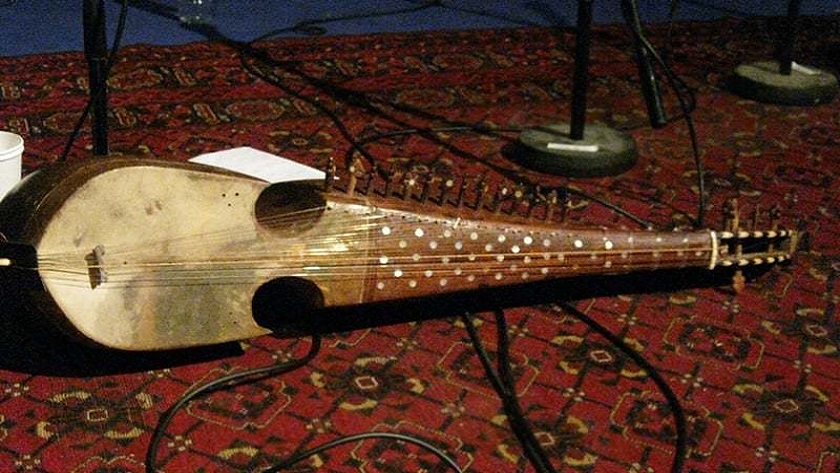Iran Press/ Iran news: Iranian traditional music is rich and holds a deep spiritual dimension. The tradition of Persian music dates back many centuries ago, and plenty of instruments have been created in Persia. Entering the world of Persian classical music is stepping into a world that arouses all the senses.
 Rabab or Rubab is a traditional instrument used in Iran and neighboring countries
Rabab or Rubab is a traditional instrument used in Iran and neighboring countries
Persian music history
Archaeological evidence shows that the development of music in Iran finds its origin in its first civilizations. Instruments, texts, and paintings testify to the emergence of musicians as far as the Elam civilization. Even if we have a few pieces of information about the tradition of music under the great Persian Empire of the Achaemenids, we know that it was already a central part of the court's life. In Iranian mythology, the glorious king Jamshid is credited for the invention of music.
 Old painting shows all kinds of musical instruments in Persian culture
Old painting shows all kinds of musical instruments in Persian culture
It was during the Sassanid era that Persian music finds its authentic roots, and many documents from this period testify to its importance. Musicians are depicted, for instance, in several Sassanian bas-reliefs, such as Taq-e Bostan, in Kermanshah. At that time, music was not simple entertainment for the court but was seen as a way for men to communicate with God.
Related article: Setar instrument; What Iran is known for
Rabab
As far as it is known, the earliest description of a musical instrument termed rabab has been given in the Kitab- al-Musiqi Al Kabir of Farabi (AD 872-950). Farabi says that this rabab is similar to the tanbur of Hurasan, a long- necked lute with a small bulging body, several frets on the fingerboard and two strings of the same thickness, which were plucked by means of a plectrum.
 Rabab is rooted in Persian culture according to Farabi
Rabab is rooted in Persian culture according to Farabi
While its roots are in Persia, the rebab's influence has reached as far east as Indonesia and west to regions of Europe and Africa. Its diffusion is closely tied to the growth of the Islamic world and the development of extensive trade routes after the 10th century.
 A hand made, decorated rabab is piece of art in its own right
A hand made, decorated rabab is piece of art in its own right
The rabab or rubab is a short-necked double-chambered plucked lute with three main strings (tuned in 4ths), four frets (giving 12 semitones to the octave), two or three long drone strings, and up to fifteen sympathetic strings. It is the sympathetic strings that give the rubab its special sound. They are tuned to the notes of the rag (‘melodic mode’) being deployed, and reinforce the sound of each note as it is played.
 Rabab is entirley hand made
Rabab is entirley hand made
The body is carved out of a single piece of wood, with a head covering a hollow bowl which provides the sound-chamber. The bridge sits on the skin and is held in position by the tension of the strings. It has three melody strings tuned in fourths, two or three drone strings and up to 15 sympathetic strings. The instrument is made from the trunk of a mulberry tree, the head from an animal skin such as goat, and the strings from the intestines of young goats (gut) or nylon.
 In recent years rabab (rubab) has been made popular again
In recent years rabab (rubab) has been made popular again
Nowadays Rabab has got a special place in traditional Persian music because of its wide range of producing bass sounds, for this there is a sound hole created between the neck and the soundboard.
Read More:
Tar instrument; What Iran is known for
Kamancheh; What Iran is known for
Ashkan Salehian

